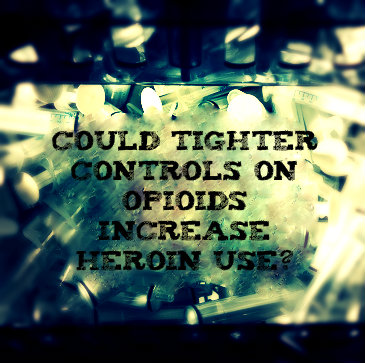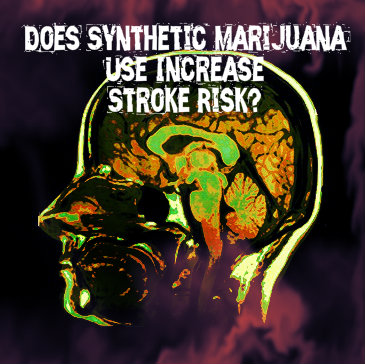Self-reporting of drug use is an approach that uses interviews, questionnaires or surveys to determine whether a person uses drugs, has previously used drugs or currently has drugs in his or her system. This method differs from objective urine testing, a universally accepted approach that relies on chemical measurements to detect the presence of drugs. In a study published in October 2013 in the journal Addictive Behaviors, a team of researchers from several U.S. institutions compared the accuracy of self-reported drug use by teenagers and young adults in drug treatment to the accuracy of urine testing. The researchers found that individuals in these age groups tend to self-report their level of drug use with relatively consistent truthfulness.
Self-Reporting Drug Use
Drug treatment professionals and researchers use self-reporting to gather a range of statistics from small and large populations of drug users. Examples of the information commonly acquired include the absence or presence of drug use, frequency of drug use, larger patterns of drug use and the presence of underlying factors that may contribute to drug use frequency or drug use patterns in some way. Depending on the scope of an interview, survey or questionnaire, self-reporting may provide data on short-term drug usage, annual drug usage or lifetime drug usage. Some professionals and researchers use self-reporting to answer relatively simple questions about drug usage, while others use the technique in connection with complex formulas designed to gather very specific, detailed information from participants.
Urine Drug Testing
Urine drug testing is a specific form of urinalysis designed to detect the presence of commonly abused substances such as opioid narcotics, marijuana and other forms of cannabis, cocaine, amphetamine, methamphetamine and phencyclidine (PCP). In some cases, urine testing directly detects the presence of these substances; in other cases, it detects the breakdown products that these substances form after entering the bloodstream. A urine drug test only tells the person conducting the test whether an individual has used a particular substance within a narrow time span of roughly one to three days. It does not provide information about such factors as the method of drug use, the specific moment of drug use or the amount of drugs taken at a given time. Testers typically confirm the results of a urine drug test with a follow-up testing procedure designed to guarantee the final accuracy of the rendered results.
Accuracy Of Self-Reporting On Drug Use
Because urine drug testing provides an objective measurement of drug use, experts in the field commonly view this form of testing as the standard tool for detecting the presence of drugs in a person’s system. However, in certain situations, it is not necessarily convenient or practical to perform urine testing. In addition, the proper interpretation of testing results is sometimes relatively complex and time-consuming. For these reasons, doctors and other professionals sometimes have a real need for other ways of obtaining the information they require.
In the study published in Addictive Behaviors, researchers from three U.S. universities sought to determine if self-reporting of drug use can act as a reliable substitute for urine drug testing. They explored this question with the help of 152 teenagers and young adults enrolled in programs primarily geared toward the treatment of addictions to opioid narcotic drugs. Some of the participants received short-term (two-week) treatment with group/individual counseling and a standard combination of two opioid addiction medications called buprenorphine and naloxone. Others received longer-term (12-week) treatment with counseling and the combination of buprenorphine and naloxone. Self-reports and urine testing results were obtained from each group at regular intervals. Each participant received a small financial reward as an incentive to keep participating in the study.
After completing the study’s main phase, the researchers concluded that the teens and young adult participants provided self-reported information on drug use that generally matched up well with the objective measurements provided by urine drug testing. Generally speaking, these findings were unaffected by factors such as the amount of money received for participation and the specific nature of each individual’s drug addiction. However, the study’s authors also concluded that teens and young adults who received longer-term counseling and medication treatment had a greater tendency to under-report their drug use than teens and young adults who received shorter forms of treatment. Specifically, these individuals downplayed their involvement in both opioid and cocaine use.
So Is Self-Reporting Accurate Enough For Solo Drug Testing Use?
The authors of the study published in Addictive Behaviors believe that their findings demonstrate that teens and young adults in treatment commonly self-report their drug use accurately enough to give doctors a potential secondary alternative to urine drug testing. However, they also believe that the level of accuracy is not high enough to do away with the need for urine testing, especially in teens and young adults participating in relatively long-term treatment programs. And Save Your Life Or The Life Of A Loved One
Get Drug Rehab Counseling Help Now And Save Your Life Or The Life Of A Loved One!
Prescription painkiller abuse has grown large enough to gain the attention of pharmaceutical companies, doctors, addiction experts, and even the federal government. There are things which can be done to try and halt the abuse of prescription medications. However, those in the know say that when access to opioids is shut down, we can expect substance abusers to move on to heroin.
Made from a synthetic form of opium, opioids are heavy-duty pain relievers like Oxycodone (Percocet), Hydrocodone (Vicodin), OxyContin (a longer-lasting form of Oxycodone) and codeine. Hydrocodone and Oxycodone are usually mixed with aspirin or acetaminophen to produce longer-lasting pain relief.
 Opioids – Number One Prescribed Medication – Problem In The U.S.
Opioids – Number One Prescribed Medication – Problem In The U.S.
Opioids are the number one prescribed medication in the nation and are responsible for the vast majority of drug-related injuries and fatal overdoses, partly because people view them as safer than street drugs. Their wide availability means more drugs are in the hands of abusers.
Most opioid addicts started with a doctor’s prescription for a legitimate need. People who take more pills for a longer period than was prescribed can easily become addicted. Young people who use them recreationally can also quickly form a habit.
Thomas McClellan, the former Deputy Director for the White House Office of National Drug Control Policy, says if we can address these three issues the problem could be controlled:
3 Opioid Issues
- Over-Prescribing – Doctors want to control pain because it promotes healing and fosters a strong doctor-patient bond. Banning opioids outright will not work, but perhaps changing the standards of care which guide prescribing could.
- Insufficient Monitoring – Efforts are underway in most states to establish state-level monitoring programs. Under these programs every doctor who prescribes, patient who picks up and pharmacy that fills a controlled drug prescription will go on record. This should help reduce over-prescribing by doctors and keep patients from going from doctor to doctor in search of prescriptions.
- Patient Misuse – The Federal Drug Administration would like to see Hydrocodone reclassified to Schedule II so that it would have more oversight and be less accessible to patients. Under Schedule II constraints such as limiting automatic refills could help to reign in misuse.
How Tightly Controlling Opioids Could Increase Heroin Use
Would these measures stop painkiller abuse? Perhaps. But even if we succeed, experts predict that drug use will simply shift to another opiate: heroin.
Opioids are synthetic opiates (forms of opium) while heroin is a non-synthetic form. In other words, the drugs are somewhat related and produce similar results. Heroin costs about one half as much as synthetic opioids. So if opioids become more expensive and harder to get, experts predict that users will just switch to heroin.
Communities need to be ready for the shift that will most likely happen as a result of opioid crackdowns. The next question will be how to handle the heroin crisis.
If you or a love one needs help finding a drug rehab facility contact an Elements Recovery Advisor now! 855-763-6488
According to the National Institute on Drug Abuse, synthetic marijuana is now second to only cannabis in terms of popularity. Users can achieve similar effects to natural marijuana, but the risks are multiplied.
A stroke and smoking spice study by University of Southern Florida researchers involved two young and healthy siblings that experienced acute ischemic strokes soon after smoking spice, also known as K2. Ischemic strokes occur when an artery to the brain becomes blocked.
 Dangerous Side Effects Of Synthetic Pot
Dangerous Side Effects Of Synthetic Pot
- Stroke
- Seizures
- Heart arrhythmia
- Heart attacks
- Psychosis
- Hallucinations
Senior author W. Scott Burgin, M.D., professor of neurology at the USF Health Morsani College of Medicine and director of the Comprehensive Stroke Center at Tampa General Hospital, said that there was some concern that the siblings could share a genetic proclivity to stroke. However, the physicians checked carefully for such a situation and did not find any genetic clues.
The researchers say the siblings experienced heart-derived strokes and that the brothers had no heart-related health problems, and that more investigation is needed to understand the potential connection between synthetic marijuana and stroke.
Properties Of Synthetic Marijuana
Synthetic marijuana is a mixture of herbal plant materials resembling potpourri that are coated with a chemical mixture intended to mimic the effects of cannabis. The mixture can be significantly more potent than cannabis because the psychoactive ingredient binds directly to the cannabinoid receptors in the brain.
The dangers of using synthetic marijuana also lies in its composition, which includes chemicals that have not been tested. Additionally, because the drug is not regulated, there is no consistency in the types or amounts of chemicals used. Dr. Burgin explains that consumers that purchase synthetic marijuana are taking a gamble with their health and their brain.
In Florida, any activities connected to selling, delivering or possession of synthetic marijuana is a third-degree felony. It’s difficult to purchase the drug at a brick-and-mortar establishment, but the drug is still available for Internet purchase.
The authors of the study urge physicians to be more aware of the potential problems associated with synthetic marijuana. When an otherwise healthy young person is treated for a stroke or heart attack, the patient should be asked about drug use. Patients will not generally volunteer drug use information and synthetic marijuana does not appear in a drug test.
Meanwhile, an editorial appearing alongside the USF findings cautions physicians that these case studies represent only two instances of stroke associated with synthetic marijuana use, even as the drug is becoming more widely used.
However, John C.M. Brust, M.D., professor of clinical neurology at Columbia University College of Physicians and Surgeons, notes that because marijuana is tied to ischemic stroke, and synthetic marijuana tends to only amplify the risks seen with natural cannabis, it is likely that strokes will be seen more often in emergency rooms.
Read More About The Problems And Dangers Of Synthetic Marijuana
Healthcare treatment is often completely separated between those that are seeking mental health, substance abuse and medical health treatment. Communities have recently been integrating all of this patient care in one facility. For patients this means better care management as they are treated fully for all their needs with a network of health providers who can work together in helping the patient heal both mentally and physically, possibly including chronic pain management care.
Mental And Physical Health Connections
Research studies are more commonly finding links between mental and physical health.
Medical Ailments May Induce:
- Depression
- Anxiety
- Other mental illnesses
Mental Disorders May Conversely Affect A Person’s Ability To:
- Eat properly
- Exercise
- Take care of their physical health
A study by researchers at the George Washington University School of Public Health and Health Services (SPHHS) looked at the effects of integrating medical health with mental health, and is the first to study the integration of substance abuse treatment with medical health.
Doctors Need To Treat Both The Body And Mind For Best Recovery And Long-Term Management
 As doctors learn more about the mind-body connections, they see the need to treat both the patient’s body and mind in order for the best recovery and life-long management. The research team at SPHHS reported that many community health centers, for example, were providing mental health treatment. Leighton Ku, PhD, MPH, Professor of Health Policy and Director of the SPHHS Center for Health Policy Research, asserts that these centers are leading the way in redefining primary health care to include both mental and medical treatments. Mental Health Treatment Centers have also moved towards treating the individual as a whole, both mentally and physically.
As doctors learn more about the mind-body connections, they see the need to treat both the patient’s body and mind in order for the best recovery and life-long management. The research team at SPHHS reported that many community health centers, for example, were providing mental health treatment. Leighton Ku, PhD, MPH, Professor of Health Policy and Director of the SPHHS Center for Health Policy Research, asserts that these centers are leading the way in redefining primary health care to include both mental and medical treatments. Mental Health Treatment Centers have also moved towards treating the individual as a whole, both mentally and physically.
The SPHHS study reported that the larger the size of the center the more likely it was to offer mental health services. Also, if there were more psychologists and psychiatrists in the area they were better able to offer behavioral health services.
Available Substance Abuse Care – Crucial For Overall Recovery
While more community health centers are offering mental health care, the study revealed that not as many centers are offering substance abuse care or crisis counseling. These centers are missing an integral part of the treatment process that is important for the overall recovery of their patients. Many larger professional treatment centers can offer the substance abuse care and crisis counseling that is needed by those struggling also with mental health conditions. This is an important part of long-term recovery.
Because of billing complications community health centers in some states are not as likely to offer substance abuse treatment or 24-hour crisis counseling. Drug and alcohol abuse most certainly affects the body, both mentally and physically. Treatment of one without the other can affect the results of treatment for the individual.
The lead author of the SPHHS study, Emily Jones, PhD, MPP, believes that if more people can be provided drug and alcohol abuse treatment – at any hour when they desperately need crisis counseling – the patient will have a better chance at recovery. Dr. Jones originally started this study and now works for the Office of the National Coordinator for Health Information Technology at the U.S. Department of Health and Human Services.
Complete Healing In Health Care
Complete healing happens when both body and mind are free of pain and suffering. Researchers like Jones find hope for integrating services as other research studies are finding multiple links between physical illnesses and mental illnesses. As doctors, psychiatrists, psychologists and substance abuse treatment professionals combine their forces in health care, more patients will find healing and the recovery process will be improved as it meets the needs of each patient on a more comprehensive level.
Read More About Mental Health And Drug Abuse Care
A new drug that has devastating consequences for its users may have finally been confirmed to have made it into the U.S. The drug is called Krokodil, and it first appeared in Russia as a cheap, homemade substitute for heroin. The name, which means crocodile in Russian, refers to the scaly sores that appear almost immediately after using this drug. The sores begin under the skin and can be so bad that the drug has been described as flesh-eating. The result is horrific and can lead to scarring, amputation, and even death.
Krokodil Beginnings In Russia
 Homemade injectable opioid drugs are nothing new in Russia. Resourceful people there have been creating and using their own drugs to get high for decades. In the 1990s, the heroin trade from Afghanistan increased and drug users did not need to make their own substitutes. Heroin addiction became a serious and widespread problem in the country.
Homemade injectable opioid drugs are nothing new in Russia. Resourceful people there have been creating and using their own drugs to get high for decades. In the 1990s, the heroin trade from Afghanistan increased and drug users did not need to make their own substitutes. Heroin addiction became a serious and widespread problem in the country.
Over the last few years, the Russian government has targeted illegal opium sales to try to solve the problem of heroin addiction. As sources of heroin dwindled and the product became more expensive, the practice of making heroin substitutes at home came back into favor. Krokodil is easily made from codeine, a prescription opioid, and other household chemicals.
Krokodil gives the user a high similar to heroin, but with even worse side effects. The green and black colored sores and ulcers begin to appear soon after the first use, and get worse as use of the drug continues. The drug, with the chemical name desmorphine, as well as the other chemicals that go into making it, tend to clump up and stay inside blood vessels all over the body. The clumps lead to infections and sores that spread and worsen.
Disputed Krokodil Cases In The U.S.
Experts in the field of illegal drugs have long feared that Krokodil would eventually show up in the U.S. Several disputed cases have been reported, including a doctor in the Chicago area who is convinced he treated two young women with the sores caused by Krokodil use. Cases in California and other states were also unconfirmed.
Reputable Case Of Krokodil Use In The U.S.
Now, it would seem that the worst fears of some have been vindicated. Two doctors working at St. Mary’s Health Center outside of St. Louis, Missouri, have published their findings from treating a victim of Krokodil use. They treated the 30-year-old man in December 2012. He had sores all over his legs. His skin was rotting away in places, and he had lost a finger on one hand to the infection. He told the doctors that he had been injecting himself with a synthetic heroin substitute that he made using codeine, gasoline, and other household chemicals. The admission, along with the sores, made a strong case that the doctors did treat a young man who had been using this scary new form of heroin.
Krokodile – Possible Future U.S. Epidemic?
If the doctors are right and Krokodil is now being used in the U.S., the implications are very serious. If drug users addicted to heroin and other opioids learn how to make this drug and can do so inexpensively, it could represent a new epidemic, much like what has been seen in Russia. The disfiguring effects of using Krokodil, as well as the addictive nature of the drug, mean that many people will suffer, and even die from using it. The Drug Enforcement Agency has yet to confirm the presence of Krokodil in the U.S., but with reports coming in from emergency rooms across the country, that confirmation does not seem to be far off.
Read More About Krokodil Claiming U.S. Victims



